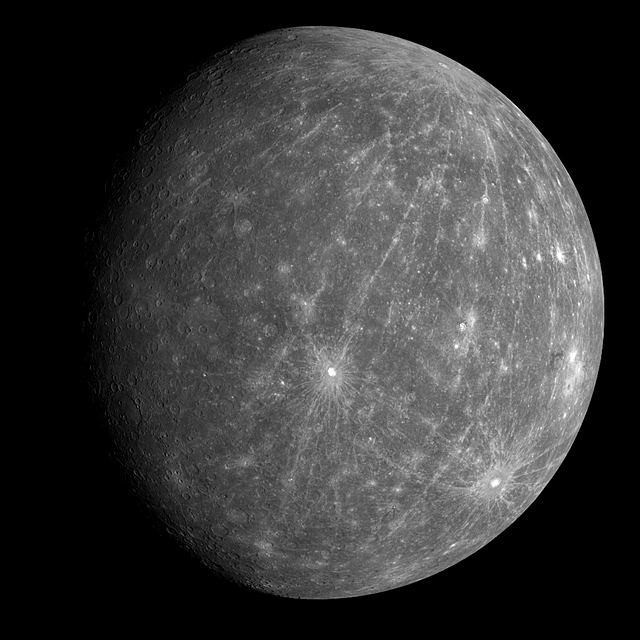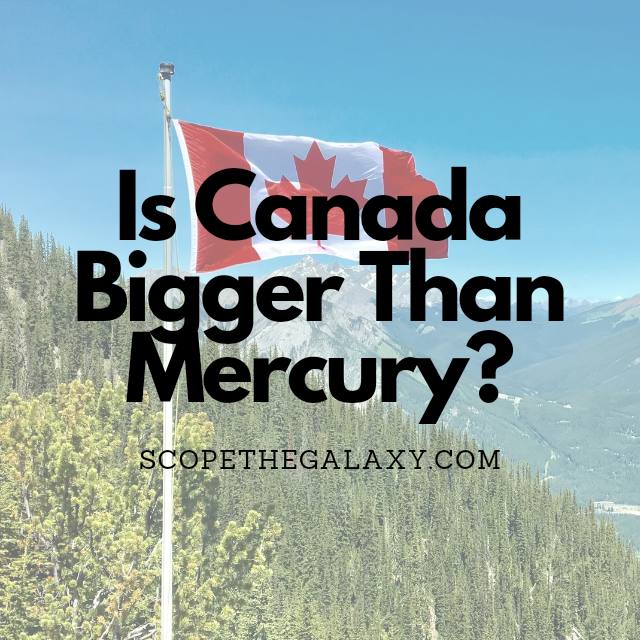*This post may contain affiliate links. This means we may make a commission if you purchase an item using one of our links*
Canada has a surface area of 9.98 million sq. kilometers and a volume of 349.46 mllion cubic kilometers while Mercury is the smallest planet but a spherical entity with a surface area of 74.79 million sq. kilometers and a volume of 60.8 billion cubic kilometers. It only makes sense that a planet would be bigger as it is spherical whilst Canada is a flat land mass.
For a more thorough breakdown on what makes these bodies as big as they are, continue reading as it will be discussed in more detail below.
How Big Is Canada?

Canada is one of the world’s largest countries, second only to the vast expanse of Russia. Still, with a population of just over 38 million, it remains one of the least densely populated countries, with more than 10 million people.
Canada has a total area of 9,984,670 sq. km, which encompasses its land mass and vast stretches of water. This country possesses an estimated 31,752 lakes, giving it the greatest number of lakes of any country in the world – they account for 9% of the country’s total surface area.
Without these, Canada would be smaller than both China and the US, possessing a land area of “just” 9,093,510 sq. km.
Canada has a width of 5,514km between its most extreme easterly point of Cape Spear across to the Yukon and Alaska boundaries. Its height – from Cape Columbia to Ontario – is 4,634km at its peak. And it has the longest coastline in the world, stretching over 240,000km. Canada is so big that the UK could fit inside it over 40 times.
Canada’s border with the USA is the longest in the world, with a length of 8,891km; this also holds the title for the longest undefended boundary in the world. In addition, the sheer size of Canada means that it borders three oceans: the Atlantic, the Pacific, and the Arctic. And from east to west, the country covers six time zones.
Roughly 24% of Canada’s total land area comprises mountains, with the tallest peak being Mount Logan which reaches a height of 5,959 meters. Still, the vast number of lakes reduces the average thickness of Earth’s crust. Scientists estimate that the thinnest strips of crust are around 29 km thick. But the average thickness is between 30 and 40 km.
If we take the average thickness to be 35 km and multiply it by the total surface area, we can calculate the estimated volume of Canada to be around 349,463,450 cubic km.
Canada’s diverse physical geography encompasses towering mountains, rolling plains, and expansive lakes. The Canadian Shield is a northern hilly region of swamps and lakes that contains some of the oldest rocks in the world. Further north, ice and snow dominate the landscape in the glacial Arctic regions.
How Big Is Mercury?

Mercury is the smallest planet in the Milky Way, with a diameter of 4,878km – around 50% larger than the diameter of Mercury. At only two-fifths the size of Earth, Mercury is even smaller than the largest moons in our solar system, Ganymede and Titan.
This planet is a similar size to our moon and is only 58 million kilometers from the Sun, which means that the Sun would appear three times larger if we were standing on Mercury compared to standing on Earth. And because of this proximity, surface temperatures reach as high as 430 degrees Celsius during the day.
This rocky planet possesses an iron core that comprises a large part of the interior; it accounts for around three-quarters of Mercury’s diameter. Approximately 70% of Mercury’s weight is attributed to its iron, with the core a similar size to our moon. Atop the core sits a rocky mantle of approximately 55km in thickness.
The surface of Mercury is similar to that of our moon, with a number of impact craters caused by meteorite collisions. Some of the most significant impact basins include Caloris (with a diameter of 1,550km) and Rachmaninoff (with a diameter of 306km), created by early asteroid impacts.
Mercury has many areas of smooth terrain, along with cliffs that stretch for hundreds of kilometers and reach up to a mile into the sky. These cliffs were formed over billions of years as Mercury’s interior cooled and contracted.
And NASA’s research into these cliff-like landforms – or scarps – shows that Mercury continues to shrink. The size of the scarps displays their youth and suggests that Mercury is still tectonically active, just like Earth. As the interior continues to cool, the planet will continue to contract.
The surface area of Mercury is around 74,797,000 square kilometers, more than 8 times the surface area of the country of China.
Furthermore, Mercury is spherical in shape so it’s overall volume would blow the value of any if not all countries and continents on Earth, out of the water.
This is because Mercury’s volume of 60.8 billion cubic kilometers makes it so Canada’s volume doesn’t even come close to the cubic measure of even the smallest planet in our solar system.
Summary
Although Canada is the second largest country on Earth, other than diameter, there isn’t any metric in which Canada truly outshines Mercury’s size.
In regards to volume Mercruy is 7.5 times bigger and in terms of volume, Mercury absolutely dominates being 170 times that of Canada.

